Report: Engineered Eucalyptus nitens flooring
Two types of engineered flooring were produced from Eucalyptus nitens grown in Southland by SouthWood Exports Ltd. The E. nitens was 19 years old, grown under an unpruned pulpwood regime and milled in 2018. The timber products were produced by John Fairweather Specialty Timber Solutions in Canterbury, made from 8mm laminates with a base of either:
- imported birch plywood; or
- cross-laminated E. nitens sawn timber.
These products have several advantages over producing flooring from a single thicker board, including:
- thinner boards are easier to dry without checking and collapse; and
- boards can be flatsawn, lowering costs of production and improving sawn recoveries with the ability to saw wider boards from smaller logs;
In addition, with the cross laminated engineered flooring product:
- low quality (by-product) boards can be utilised for 50% of the volume of the flooring product; and
- dimensional stability (especially cupping and movement in service) should be improved from the bottom layer being oriented perpendicular to the top layer.
A separate Specialty Wood Products Partnership (SWP) report assessed the performance (dimensional stability) of the laminated flooring relative to an E. nitens solid wood floor product produced from the same trees, as well as a competing commercial products (engineered oak).
Methods for producing sawn timber
Approximately 3.7 m3 of logs were milled, with an average mid-diameter of 31cm and range of 21.8cm - 41cm.
The quartersawn E. nitens solid timber flooring product and flatsawn laminates were produced by slab milling the logs and subsequently edging slabs into boards with a twin-blade edger.
The 28mm quartersawn slabs were edged to produce straight quartersawn boards. This yielded nominal volumes of 0.6m3 quartersawn timber (twenty-four 100mm width boards and thirty-six 150mm width boards at 25 mm thickness).
Flatsawn 10mm laminate slabs were edged to to 110mm, 156mm, 210mm and 265mm widths to remove taper and wavy edges but were not edged to a final product width. Quantities were not measured because slabs were to be edged again to size after drying.
Following edging, the boards were slowly air dried for 6 months by wrapping the stacked pallets of filleted boards with four layers of microclima cloth (frost cloth). When the boards were below 30% MC they were then dried to 12% MC in a solar kiln.
The kiln-dried quartersawn 28mm boards were dressed into tongue and groove flooring using a Logosol planer/moulder. This process involved a first pass to dress four sides of the boards (blanking) and then a second pass to profile the flooring product. The solid wood flooring profile had relief grooves along the length of the back face as this is typical for this type of flooring. It is possible that this profile limits the formation of cup relative to an ungrooved board, but because these grooves are typical of solid wood floorboards, it was decided to include them for a representative flooring product.
The kiln dried flatsawn 10mm laminate face-boards were twin-blade edged to 168mm, 190mm and 220mm. Underlay boards were edged to 75mm and 100mm on a Woodmizer twin-blade edger. All boards were then dressed to 8mm thickness and face boards dressed to to 162mm, 184mm and 214mm widths. Underlay-boards were not dressed for width. A total of 53 m2 of usable underlay boards and 49.5 m2 face boards were produced (42.6 m2 usable).
Laminated panels were pressed at 2.4m length and 1.2m width, six 184mm width boards per panel, seven 162mm width boards per panel and five 214mm boards per panel. The 12mm thickness birch plywood panels (1.2m x 2.4m) were used for the ply backed product. Cross-linked PVA was used for adhesive and the panels were hot pressed. Boards were resawn from the panels and these were profiled into tongue and groove flooring product at 14mm thickness (two-layer cross-laminated) and 19mm thickness (ply-backed).
Some completed 2.4m long laminated boards were shipped to Scion to be cut into samples and tested fpr dimensional stability. The sample board length was 0.8m to allow for 3 boards to be cut from each 2.4m length of ply-backed flooring, to maximise the number of samples tested. Additionally, the solid wood boards were supplied in two different widths - 132mm and 110mm to represent what is typically supplied into the market.
The sawlogs were from four trees, with four 3m logs from each tree.
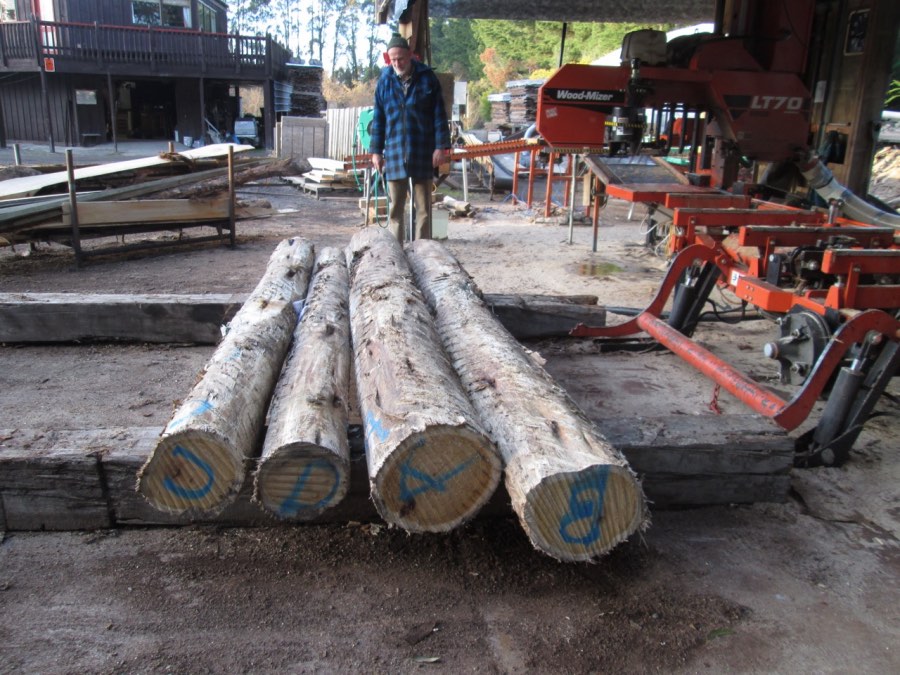
A slab sawing pattern was used to cut 10mm slabs:
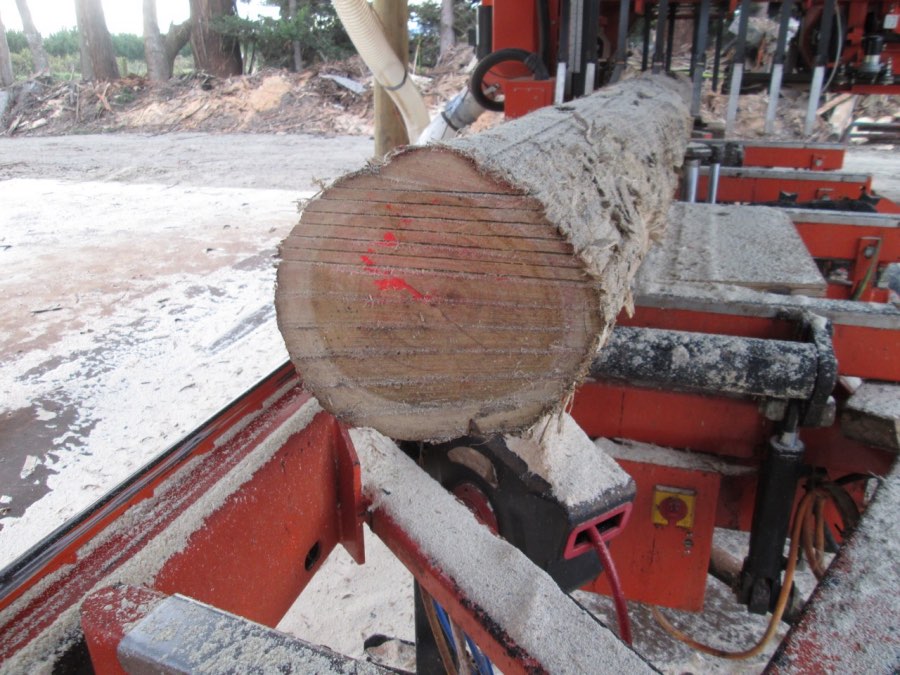
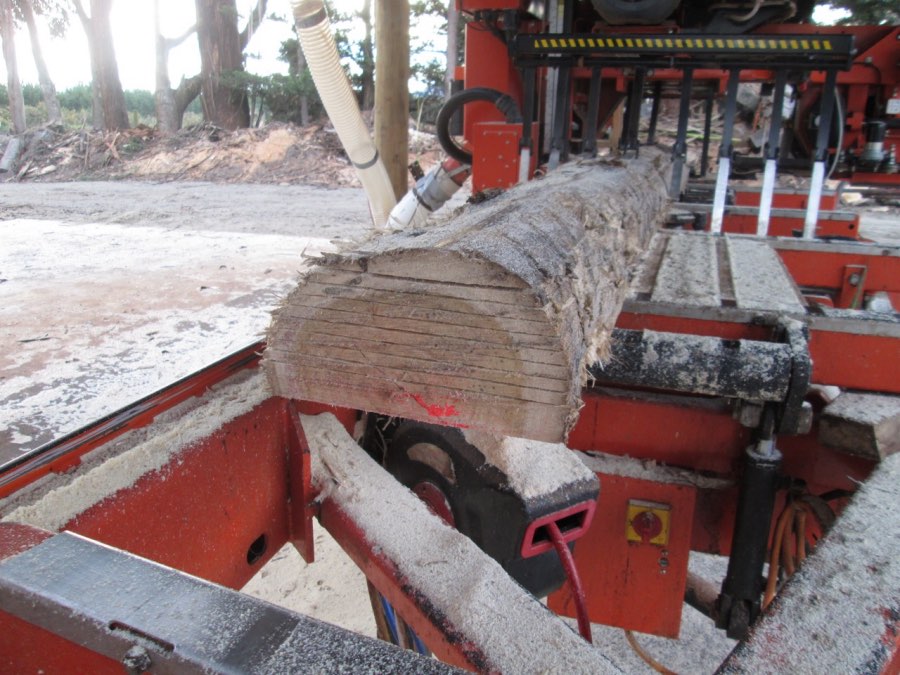
These slabs were then edged using a woodmizer twin-blade edger:
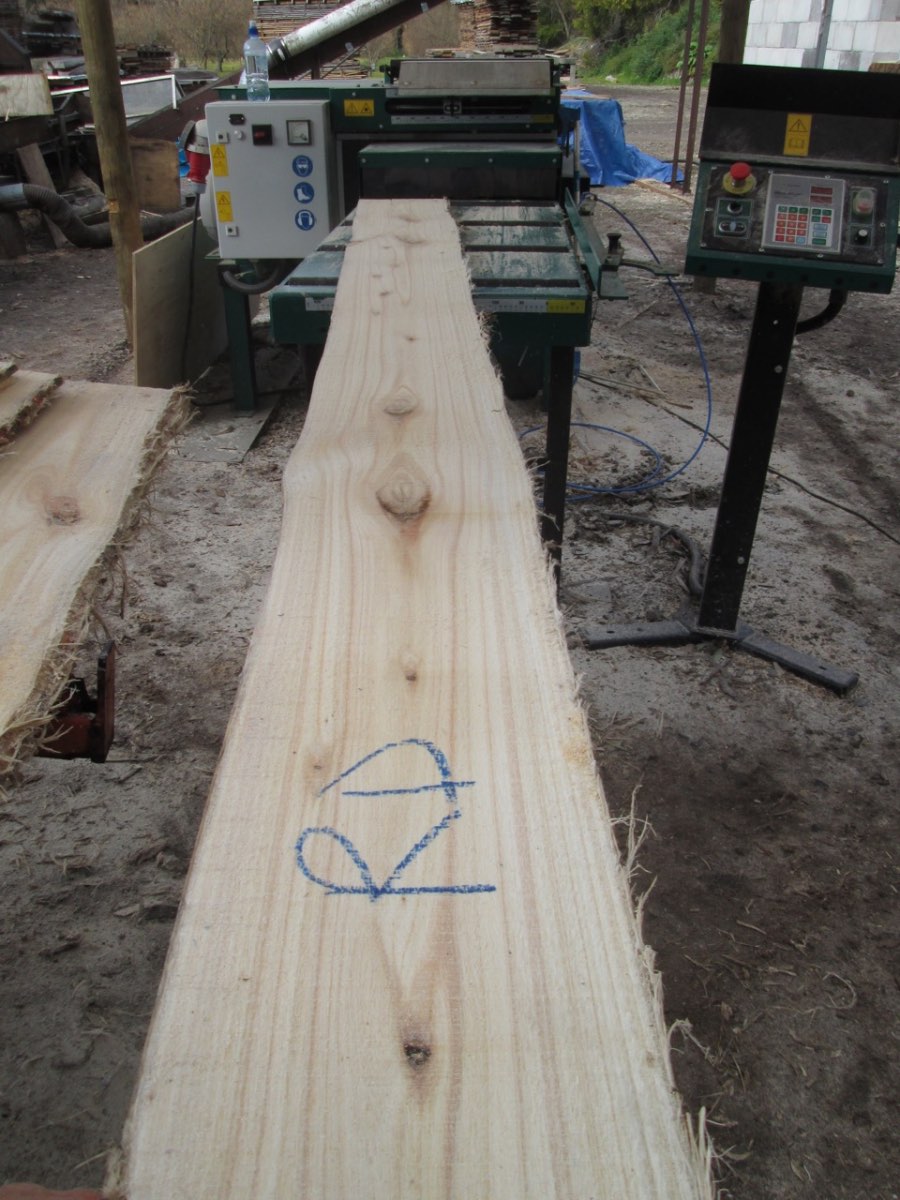
End splits caused some problems as these tended to open up when sawing the slabs.
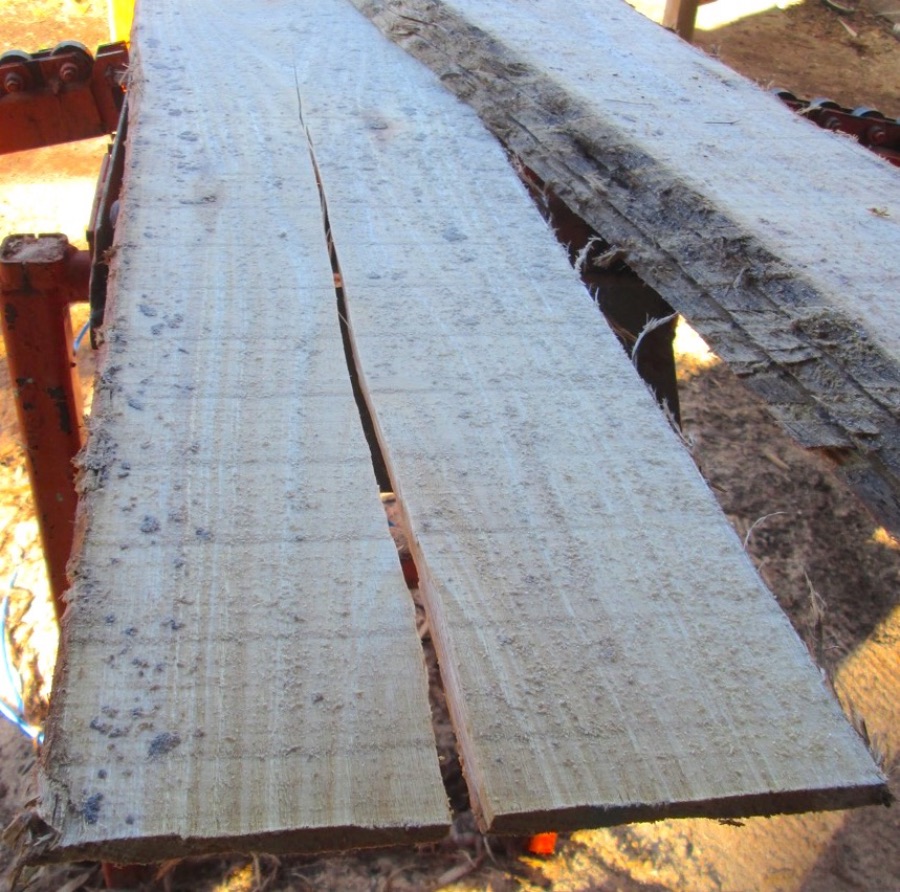
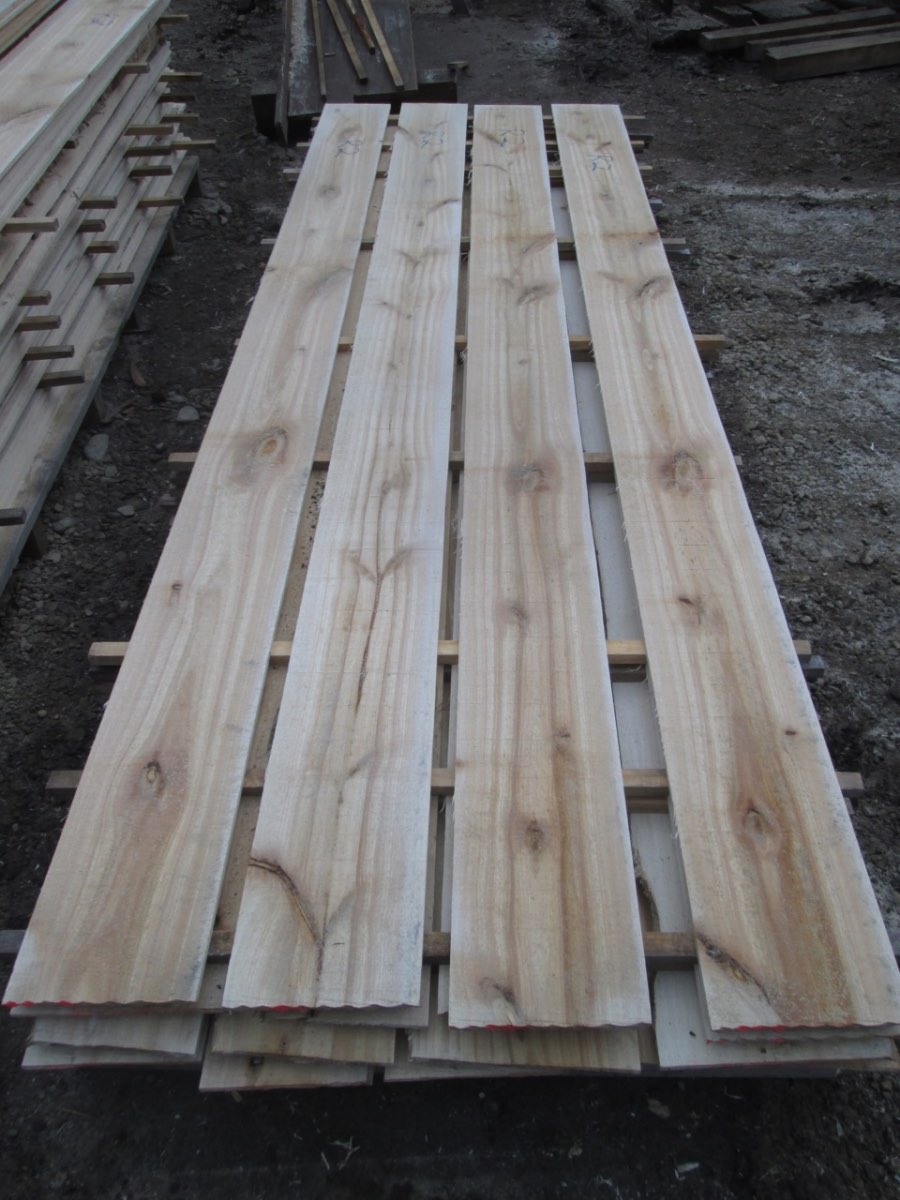
Because the trees were unpruned there were plenty of knots of all different shapes and sizes:


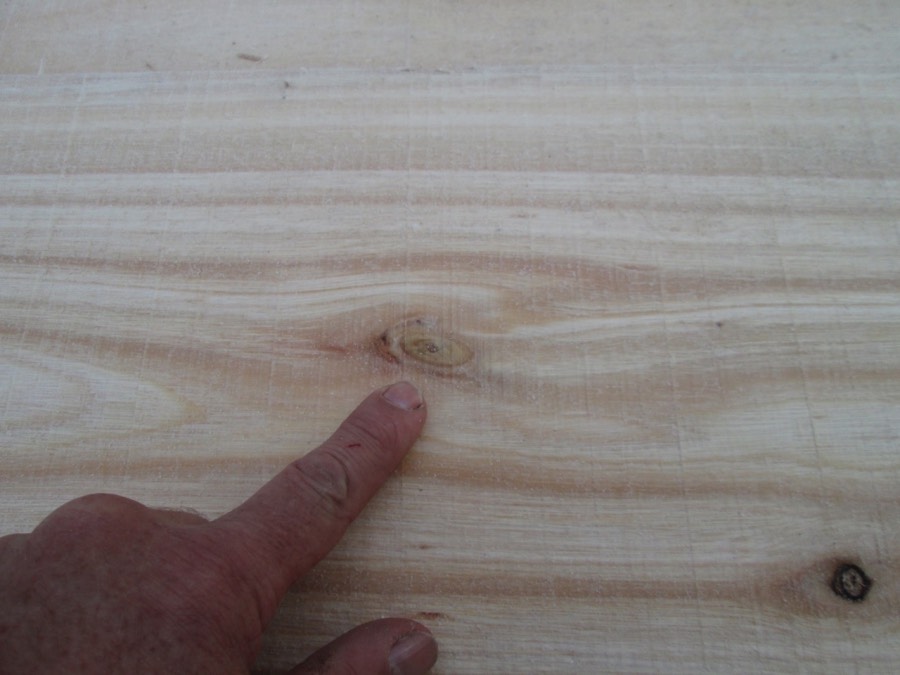
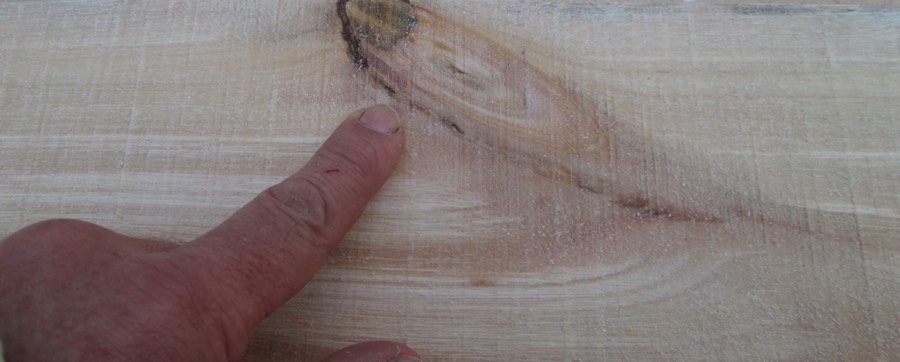
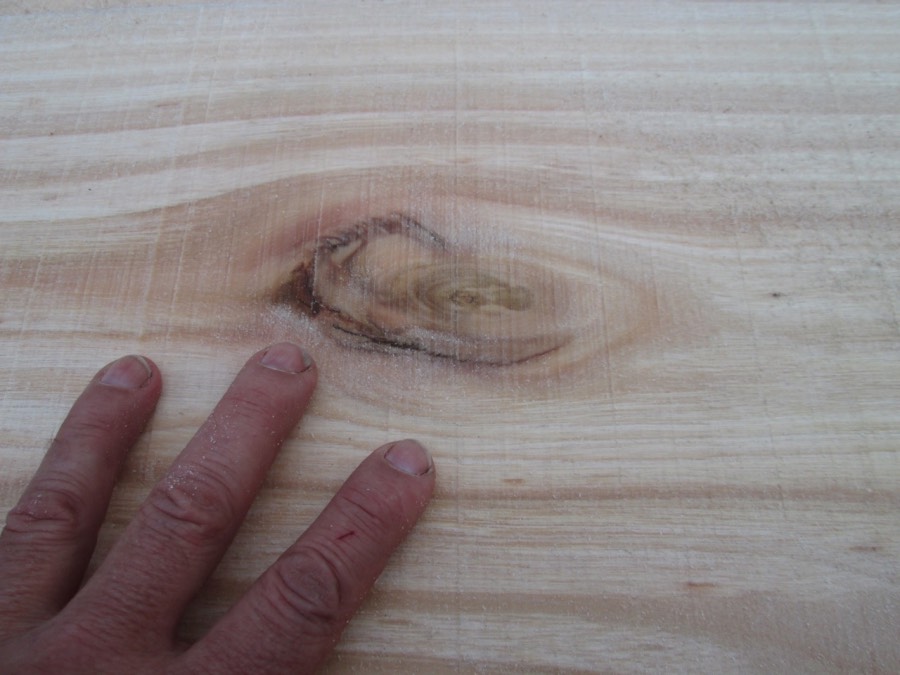
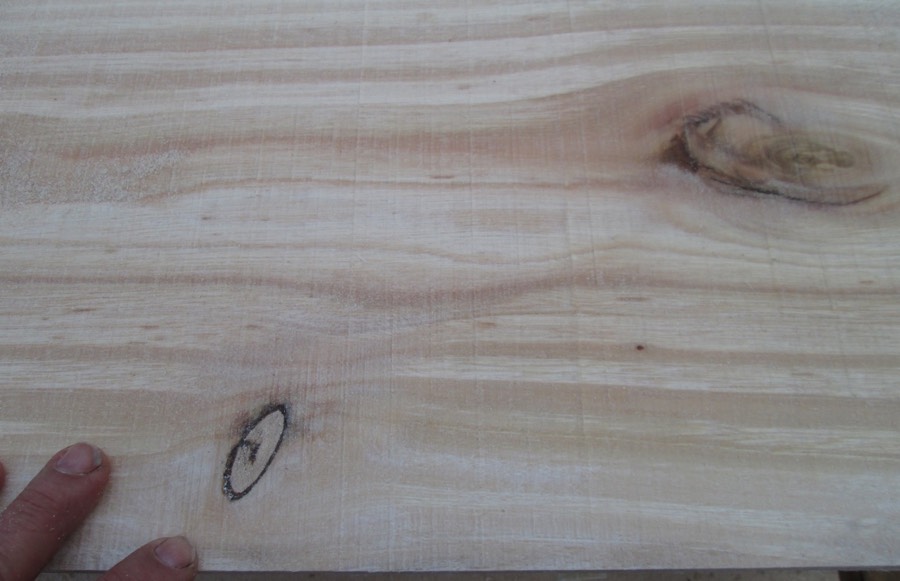

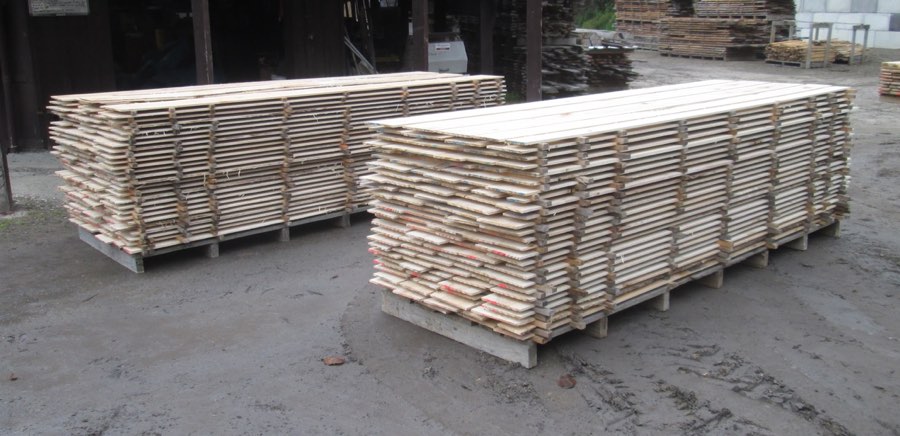
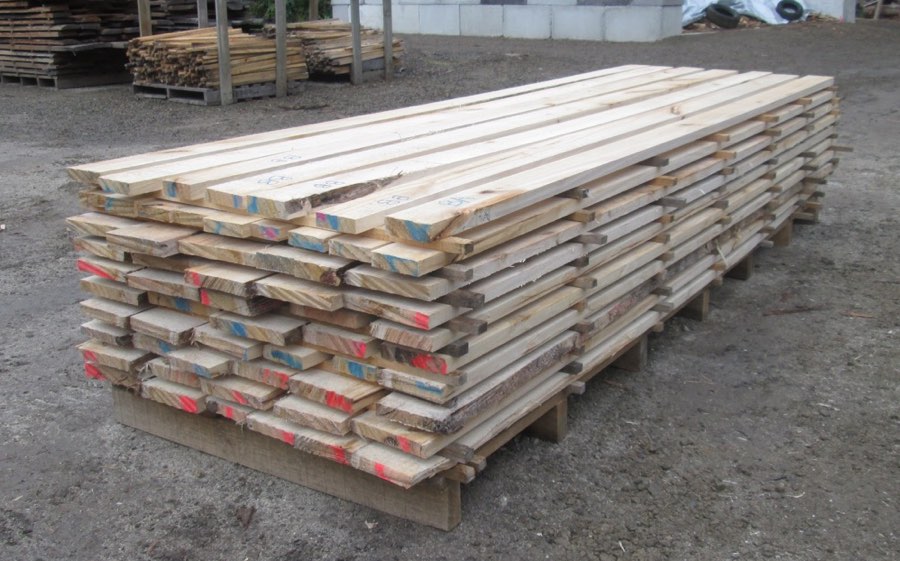
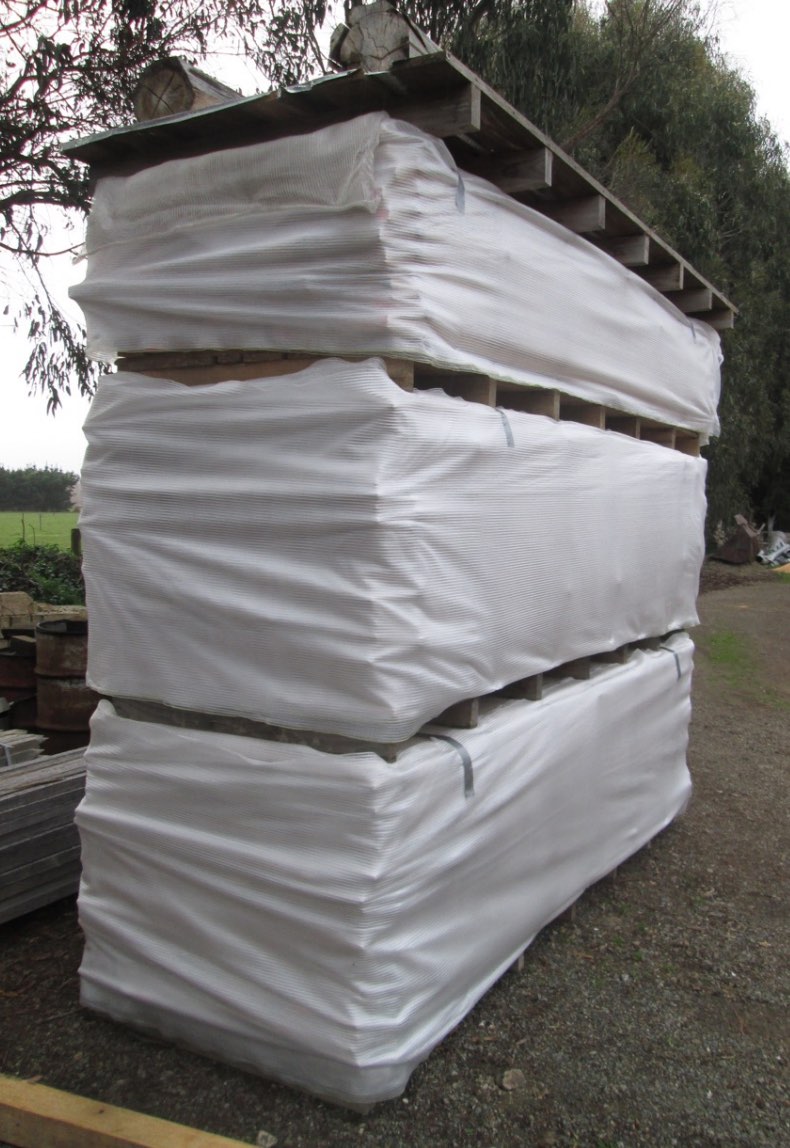
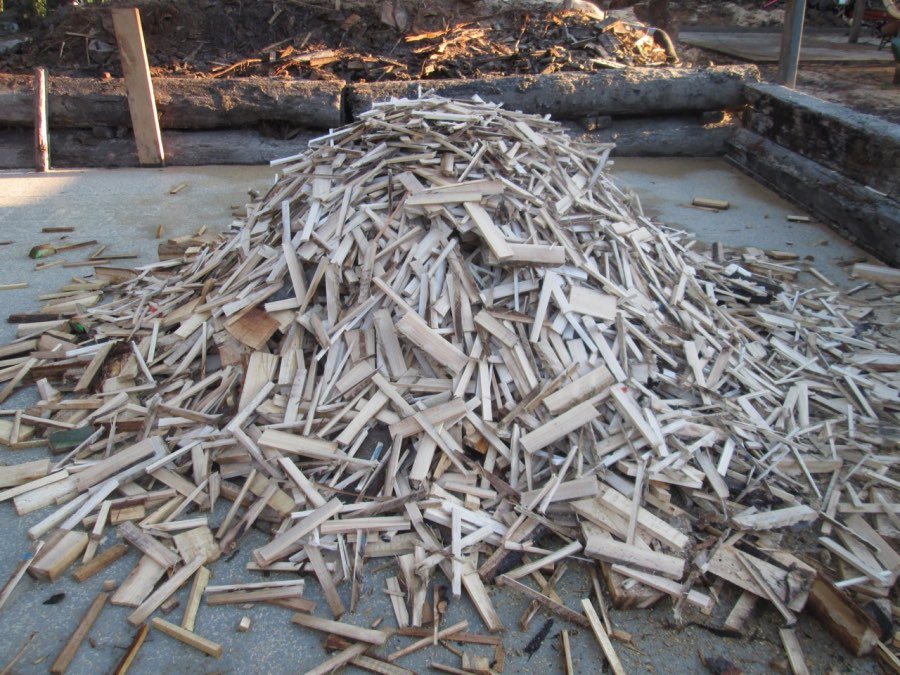
Methods for testing stability of boards
As the in-service moisture content fluctuates, so too does the width of timber floorboards, potentially resulting in unsightly gaps or lifting of boards (the most common issues with timber flooring). The performance of the three products produced from E. nitens was assessed and compared to commercial engineered oak flooring based on the board dimensions and levels of distortion after equilibrating the boards to different humidity levels, and also while soaking one face in water.
Results
Approximately 1m3 nominal 8mm lamellas and 0.6m3 of nominal 25 mm thickness boards were produced, approximately a 43% nominal sawn recovery.
Degrade in sawn product
From the ninety-five face boards sawn at 10mm thickness, checking was present in only four boards. Distortion around knots was negligible. Skip caused by collapse and cupping was present in twenty-one of the ninety-five boards once dressed from a green sawn thickness of 10mm to 8mm (14.4m from 270m of face boards, or 5.3%). This suggests that boards should have been sawn at a thickness of 11mm or 12mm to overcome any skip. End splits caused the most degrade (19.6m from 270m of face boards, or 7%) which was not surprising from wide flatsawn boards. Face boards were also measured for “premium appearance” (mostly knot-free) short lengths, which were 159m or 59% of the total face board length produced, with an average length of 0.9m. This suggests that two appearance grades, e.g. "rustic" and "premium" could be produced from the E. nitens pulpwood resource, provided short lengths were acceptable in the production process.
For this experiment knots and holes were not classed as degrade, but filled with epoxy resin for both types of engineered flooring. The finished product had a rustic but attractive appearance from the predominance of these knots combined with clear lengths between knots.
Stability tests
The E. nitens engineered boards had significantly improved width stability compared with quartersawn solid timber under a range of humidity levels.
Overall the differences between the engineered oak and E. nitens boards were quite small. In situations where wide boards are specified, the ply-backed or cross laminated E. nitens would be more suitable than solid-timber E. nitens because they are more dimensionally stable. However, the cross-laminated boards were more prone to cupping than the ply-backed engineered flooring products, so may require fixing to a floor substrate rather than installation as a floating floor.
Discussion
Levels of cup should be influenced by the proportion of top lamella thickness to underlay thickness in engineered flooring, because the top lamella is driving the level of cup while the backing is designed to restrain this. Less thickness in the lamella and more thickness in the backing should result in reduced cupping. The results show this to be the case, with the lamella in the cross-laminated product being half the total thickness and equating to the greatest cup. The least thickness in the engineered oak flooring lamella (between 27% and 30% of the total thickness) equated to the least cup while the ply-backed nitens lamella was 36% of the total thickness and had slightly more cupping than the engineered oak.
Conclusions
Mitigation of drying degrade (checking, collapse and cupping) from flatsawn E. nitens by producing wide thin-section boards was an important result from this study. Flatsawing wide boards from small-diameter E. nitens is both cost efficient and also produces high sawn recoveries from smaller log diameters, in this case from unpruned trees grown at a high stocking for pulpwood.
Producing a cross-laminated flooring product offers an opportunity to utilise lower grades of sawn timber because degrade such as end splits, skip and black knots would otherwise result in waste, but low grade material can instead be diverted into the unseen underlay boards.
Developing production methods for high value products from E. nitens is a key goal of the Specialty Wood Products partnership. Contemporary market demand is for wide floor boards and producing these from E. nitens has been demonstrated in this case not from large, old trees, but from the young SouthWood Exports pulpwood resource. This research was the first step in assessing a novel production method by quantifying key product properties. The results from this research suggest next steps should be to:
- test levels of cupping in cross-laminated boards at low humidity with the top lamella thinner than the underlay; and
- accurately quantify recoveries and production costs from the process, in order to assess the economic viability of a New Zealand-produced engineered flooring product from small-diameter unpruned E. nitens.
Disclaimer: While every effort is made to ensure the accuracy of the information provided on this site, Specialty Timbers New Zealand inc. do not accept liability for any consequences arising from reliance on the information published. If readers have any doubts about acting on any articles they should seek confirming, professional advice.
 Specialty Timbers New Zealand
Specialty Timbers New Zealand